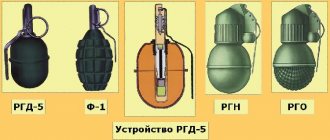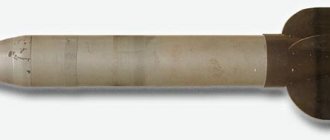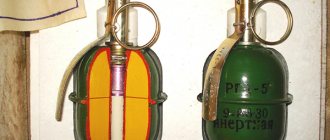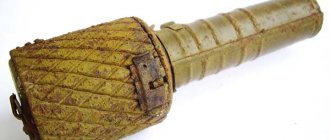Cruise missile "Caliber" or an ISIS nightmare
On the night of October 7, 2015, very unpleasant gifts were sent to ISIS military facilities (We remind you that ISIS, also known as the “Islamic State,” also known as the “Islamic State of Iraq and the Levant,” is recognized as a terrorist international organization and its activities are prohibited in Russia) . A group of the missile ship (RK) "Dagestan" and three small missile ships (SMS) - "Grad Sviyazhsk" , "Uglich" , "Veliky Ustyug" launched a missile strike with 26 "Caliber" . The target of the strike: the infrastructure of the Islamic State in Syria. The event caused a wide resonance at the UN, where Russia was almost unanimously condemned for the bombing. The media also cried out: within a few hours, many articles, opinions, forecasts, and so on were published. In many countries there has been a sharp rise in the production of building materials. An impressive portion of the Couch Troops and Chairborne had to regroup their forces. And there was a reason:
- The missile strike was carried out using the latest weapons.
- The missiles hit the target exactly, each on its own, with 100% success.
- There was no damage to civilian buildings or civilians.
- The missiles traveled 1,500 kilometers over the territories of the two countries before hitting their targets.
The Roman legionnaires were terrified of the Carthaginian war elephants. Indians in America fled at the sight of ordinary riders on horses. Veterans of the Wehrmacht who fought against the USSR still shudder at the affectionate Russian name “Katyusha” or the mention of “Night Witches”. And now the time has come for a new nightmare.
Cruise missile 3M14 "Caliber"
| Performance characteristics of the 3M14 "Caliber" missile | |
| NATO classification | SS-N- 27 " Sizzler " |
| Year of adoption | 2012 |
| Length, m | 8,1 |
| Case diameter, mm | 514 |
| Wingspan, m | 3,3 |
| Initial flight weight, kg | 1320 |
| Available warheads | High explosive, nuclear |
| Flight range with high-explosive warhead, km | >1500 |
| Flight range with nuclear warhead, km | 2600 |
A little history. The Caliber has a father, also a previous generation sea-launched cruise missile, the 3M10 Granat . According to the above parameters, the missiles differ little, but there are differences there too. For example, the Granat missile was intended only for launch from submarines, while the Caliber missile is completely universal in this regard. In addition, it was impossible to install a high-explosive warhead on the Granat.
Both "Granat" and "Caliber" were released first by the Soviet and then by the Russian OKB ( Experimental Design Bureau Last Day Club note ) "Novator" . This bureau has been developing and producing anti-aircraft and missile technology since 1947. “We’ll fly ourselves, but we won’t let you!” And so, in 2012, comrade designers released a convincing argument, a means of non-nuclear deterrence.
NATO countries, of course, also have analogues of “Caliber”, even those invented much earlier. This is the American Tomahawk. It was created even somewhat earlier than “Grenade” itself. American missiles also have a number of advantages for their time, otherwise the inhabitants of the Pentagon, who are not simpletons at all, would have written off these munitions long ago. And so, for several decades now they have been used and modernized over and over again.
But let’s return to our “Calibers”. As we have already mentioned, the missile is universal in terms of deployment. The launch can be made from various complexes:
- Club-N , installed on surface ships, from where, in fact, the salvo was fired at ISIS from the waters of the Caspian Sea.
- Club-U , also installed on surface ships, but in a modular version, that is, it can operate autonomously.
- Club-S , which is installed on submarines. Missiles are launched from torpedo tubes.
- Club-M . These are coastal mobile missile systems.
- Club-K - container complexes. The most interesting method of basing these missiles. That is, the launch can be made directly from a container from a cargo ship that transports potatoes. How many people are familiar with the film “Baron of Arms”?
- From airplanes. The name of the complex could not be established.
The missiles showed high hit accuracy even during tests in 2013. On October 7, they were used for the first time in a combat situation. Moreover, the enemy had no idea about this very combat situation until the “Calibers” radically deformed its infrastructure.
A day after the attack on ISIS, a joke began to circulate on the Internet about the fact that the most popular tool in Google maps was the ruler. Users measure 1,500 km from the Russian seas and scratch their heads in puzzlement.
Let's hope that weapons of such power will no longer have to be used.
New in blogs
Widely covered in the media, test launches of the latest Russian long-range cruise missiles (LCRCMs) of the Kalibr-NK complex, carried out from the Caspian Sea from the missile ships Project 11661K and 21631, arouse increased interest in these missiles. The reason is clear : Russia received something it never had - an effective tool of non-nuclear deterrence, which could be used tomorrow in the Middle East and the Mediterranean, and a few years later (in 2018-2019 - after the entry into operation "Irkutsk" and "Admiral Nakhimov") - in any region of the globe.
Launch of the Kalibr-NK complex missile from the Grad Sviyazhsk missile launcher, pr. 21631, 09.2013 (“National Defense” No. 3/2014)
Considering the above, it is easy to understand how secret the developments of the Yekaterinburg OKB Novator (now superstars of the domestic defense industry) are. The available data relates exclusively to the export version of the 3M-14E missile (unlike the URAV Navy indices, it is written with a hyphen), which cannot be considered even a close resemblance to the Caliber CRBD. Nevertheless, let's try to get at least some clear idea about our new weapon.
First of all, without delving too deeply into history, let us outline the cause-and-effect relationships, which, in biblical language, can be characterized as follows : “Tomahawk” gave birth to “Grenade”, “Grenade” gave birth to “Caliber” . Let's start with the American "prototype" .
Mark 14 – grandma “Tomahawk”
You still have to look into history, because without this it will be difficult to understand the origin of the performance characteristics (primarily overall dimensions) of not only the legendary BGM-109, from which the “Granat” and “Caliber” literally grew, but also 3M-14E missiles of the Club family.
Returning to the development of the CRBD in the early 1970s (after a 20-year break since the Regulus), the Americans were guided by two motives: to reduce (liquidate) the gap with the USSR in the field of ship-based strike guided missile weapons and to find the use of SSBNs that were subject to exclusion from composition of the fleet in accordance with the SALT-1 treaty. Having abandoned the CRBD in the dimensions of Polaris and Poseidon (in order not to lose the trust of the contract partners), and then the placement of several cruise missiles in each SSBN silo, we settled on a torpedo size [1].
The modern “torpedo standard” operating in NATO countries dates back to 1931, when the 533-mm boat-borne anti-ship torpedo Mark 14 was adopted by the US Navy, replacing the Mark 10 (1915, length 4.95 m) and which became the main weapon of the American submarine fleet during the Second World War. Its dimensions are exactly the same as the Tomahawk (more precisely, its protective launch capsule) - diameter 21 inches ( 533 mm), length 20 feet 6 inches (246 inches = 6.25 m). Today, not a single type of Western underwater weapon exceeds and is unlikely to soon exceed these dimensions (despite the presence in the American fleet of three Seawolf-class nuclear submarines with 26-inch = 660-mm submarines).
The choice of torpedo size determined the main performance characteristics (performance characteristics) of the Tomahawk. It is impossible to create a high-speed high-altitude rocket within the accepted dimensions. An air defense breakthrough can only be achieved through secrecy: reducing the ESR and flying at an extremely low altitude. Subsonic speed corresponds to a multi-hour flight to the target, which leads to unacceptable accumulation of gyro-device errors, and the use of astro-correction is incompatible with a low-altitude flight profile in dense cloud conditions [1]. In general, the CRBD took place thanks to two outstanding achievements of American (and then Soviet) designers : a terrain correction system and a compact, highly economical bypass turbojet engine (TRDE) .
The launch of the Kalibra-NK rocket from the Dagestan missile launcher, pr. 11661K, 09.17.2012 (photo from news.mail.ru) is a very valuable image, because when enlarged, the outlines and proportions of the 3M14 CRBD are clearly visible on it
"Grenade" - "Tomahawk" with a long handle
It so happened that the designers of OKB Novator received an almost two-meter head start over their colleagues from General Dynamics. The fact is that the torpedo tubes of Soviet submarines, with the same 533-mm caliber, were significantly longer than the American ones. The author was unable to find exact data on the internal length of the tube of a “standard” torpedo tube, however, visitors to the museum ship S-189 (the medium submarine of the first post-war 613 project) are told that the length of the torpedo tube on this boat is 8 m (link 1). It is also known that the overall length of the DTA-53 installed on destroyers of Project 956 is 8.44 m (link 2), but in general the size we are interested in can be judged by indirect data - the dimensions of the 533-mm underwater weapon.
The “standard” domestic anti-ship oxygen torpedo 53-65K has a length of 7.945 m (link 3), the Shkval high-speed underwater missile (SPR) is 8.2 m (link 4), the universal (for targets and carriers) remote-controlled electric torpedo TE- 2 with detachable (boat) towed remote control coil - 8.3 m (link 5). The given data allows us to assume that the length of the rocket of the “Granat” complex, 8.09 m, found in most sources, corresponds to reality and is a launch rocket (with a solid fuel accelerator and, possibly, with a protective capsule).
Longer ( by 1/3 ) torpedo tubes adopted by the USSR Navy gave (and are giving) designers the opportunity to develop more powerful ammunition compared to the navies of NATO countries, which manifested itself, in particular, in an increase in the launch weight of the 3M10 missile (according to the author - by 12%, according to other data - by 15% [1]). The additional kilograms were not wasted, but, according to available data, were used to increase the fuel supply and, as a result, the flight range ( 3000 km compared to 2500 km for the Tomahawk TLAM-N Block I).
Taken from three different sources, projections of the KR 3M10 complex “Granat”, which have one thing in common - their proportions do not correspond to the original. When recalculated using a well-known diameter ( 0,514 m) the starting length is equal to 7,4 (Fig. 1 and 2) or 7,9 (3) instead 8,1 m, and the wingspan is 3,0 (2) or 3,9 (3) instead 3,3 m. In addition, in all images the starting accelerators have different lengths - 1,2 (1), 1,0 (2) and even 1,4 m (3). .Sources:. 1 - forum.keypublishing.com courtesy of militaryrussia.ru. 2 - “Equipment and weapons” No. 10/2006, 3 - “Equipment for youth” No. 12/2003.The history of the creation and design of the “Grenade” can be found in the works of V. Asanin [1], A. Shirokorad [2] and dimmi_tomsk on the website militaryrussia.ru (link 6), but here it is worth saying only that, born in a counterweight to the nuclear Tomahawk, and, being its complete analogue, the 3M10 missile was never able to play its intended role in the arms race. At the very beginning of the large-scale deployment of the “Grenade” on nuclear submarines of the USSR Navy, at the beginning of 1989, in accordance with Soviet-American agreements, all weapons equipped with nuclear warheads were removed from multi-purpose nuclear submarines and stored in coastal arsenals [4] (in Unlike a number of boats, Project 667AT and 671RTM, the newest 3rd generation nuclear submarines, Project 945A and 971 “Granats”, in fact, were never seen). However, this is not the end of the story .
Club 3M-14E – “Garnet” on a short leash
After the collapse of the USSR, OKB Novator, like many other defense industry enterprises, had to enter the international market in search of a livelihood. In 1993, in Abu Dhabi and at MAKS, the three-stage anti-ship missile 3M51 "Alpha" was presented (link 7) - an export version of a promising missile (at that time this was possible) developed on the basis of the "Grenade" complex "Biryuza". “Alpha” (which later transformed into 3M-54E) laid the foundation for the now widely known Club family, which some time later included the KR 3M-14E, a direct descendant of the 3M10.
The 3M-14E differs from its famous ancestor in two features. Firstly, it became significantly shorter, becoming smaller in size than the Tomahawk. The “cutting” was done to increase competitiveness - with customers with short (“NATO”) torpedo tubes in mind. Secondly, its flight range has decreased by an order of magnitude, turning the strategic CBMD into an operational-tactical missile at best [5] - international law (Missile Technology Control Regime - MTCR, created in 1987) prohibits the trade in weapons with a range of more than 300 km [6]. Due to these differences, the 3M-14E can in no way be identified with the missiles fired by the Dagestan and Grad Sviyazhsk.
Photo of a full-scale sample of the KR 3M-14E and a pillar with its characteristics (“photomontage” by the blog author), taken by A. Karpenko at MAKS-2011 (other photos - link 10). Note: since 2002, OPK Novator has been part of the Almaz-Antey concern.
As for the actual deliveries of the 3M-14E missile system abroad, there is reliable data on a contract worth $182 million concluded in 2006 for 28 missiles for the Indian Navy (diesel-electric submarines pr. 877EKM), 24 of which were delivered in 2008 [7 ]. Noteworthy is the high cost of one missile - $6.5 million (if something else was not included in the contract price). For comparison: the average cost of one Tomahawk mod. IV under the last two contracts with the US Navy amounted to $1.22 million (link 8). In addition to India, possible (potential) owners of the 3M-14E are China, Vietnam, Algeria and Iran, whose navies have diesel-electric submarines pr. 877EKM, 08773, 636M and 06361 .
KRBD complex "Caliber" - facts and assumptions
There are only two facts about CRBD 3M14 - they were voiced by the commanders of the Caspian Flotilla and the Black Sea Fleet. In the first case, the firing range for the coastal target of the Kalibr-NK complex of the Republic of Kazakhstan "Dagestan" was stated - up to 2600 km (link 9, supplied by bmpd ), in the second (without indicating the nature of the target and the name of the complex installed on the diesel-electric submarine pr. 06363 ) - more than 1500 km (link 11). The apparent discrepancy is easy to understand if you look at the characteristics of the Tomahawk in nuclear and high-explosive versions (2500 and 1600 km, respectively) - the Commander-in-Chief of the KF, no doubt, had in mind the maximum range of the 3M14 if equipped with a SBC.
Side view of the 3M-54E1 anti-ship missile from the Club family - the twin of the 3M-14E (“Equipment and weapons” No. 6/2009)
Edited fragments of photographs of launches of 3M10 (experimental 3M10V2, above) and 3M14 missiles, indicating their geometric similarity (unlike 3M-14E). Sources: 1st photo - still from the film “State Central Marine Test Site. 50 years”, 2004 [10]; 2nd and 3rd - photo of the launch of the missile launcher from the Dagestan missile system, posted above (the bottom photo was made darker and more contrasting to better indicate the true diameter of the missile, because on the average it seems smaller than it is In fact).
Regarding other performance characteristics of the new domestic sea-based CRBD, it can be assumed that during its development the aerodynamically adjusted 3M10 airframe was taken as a basis, made using new structural materials, equipped with a modernized main engine (let's call it TRDD-50BM) and a control system on a new element base, supplemented by a satellite navigation channel. In other words, in the absence of the need to launch from foreign torpedo tubes, the dimensions of the 3M14 should be approximately the same as that of the Grenade missile (which is confirmed by the photographs posted above).
The reduction in flight range from 3000 to 2600 km (despite the possible gain in mass as a result of innovation) can be explained by several reasons : 1) insufficient reliability of data on both missiles; 2) the fact that 2600 km is the combat range (taking into account horizontal and vertical maneuvering), and 3000 km is the maximum calculated range (strictly in a straight line at the same altitude); 3) the lack of feasibility to have the same range as the “Granat”, from the point of view of geographical location. potential targets; 4) lack of expediency. (for example, due to outdated data) the missile is in flight to the target for more than three hours (corresponding to a range of 2600 km and a speed of 0.7 M) .
Data on the Tomahawk Block IV taken from the US Navy website (link 12) and from the advertising brochure (pdf, link 13)
Sources:
[1] V. Asanin “Missiles of the domestic fleet”, part 1 “The enemy shore is ahead”, Equipment and weapons, No. 10/2006. [2] A. Shirokorad “Fire Sword of the Russian Navy”, Chapter 4 “Granat Missile Complex”, pp. 307-317, Yauza, Eksmo, M., 2004. [3] V. Kuzin, V. Nikolsky “Military naval fleet of the USSR 1945-1991”, Historical Maritime Society, St. Petersburg, 1996. [4] V. Ilyin, A. Kolesnikov “Submarines of Russia”, Astrel, AST, M., 2001. [5] D. Rogozin “War and peace in terms and definitions”, chapter 9 “Military confrontation between states and the strategy of containment”, PoRog, M., 2004, https://royallib.com/book/rogozin_dmitriy/voyna_i_mir_v_terminah_i_opredeleniyah.html. [6] “International Law”, textbook (edited by A. Vylegzhanin), 21.3 “International Legal Aspects of Disarmament”, Yurayt, M., 2011, https://www.irbis.vegu.ru/repos/11290/ HTML/211.htm. [7] India in the structure of world arms imports/exports in the period 2003-2010, Analytical materials for the DefexpoIndia-2012 exhibition, TsAMTO, 2012, https://www.armstrade.org/files/analytics/135.pdf . [8] “Storm of the Depth” - website of the St. Petersburg Submariners Club, https://www.deepstorm.ru. [9] V. Asanin “Missiles of the domestic fleet”, part 4 “Strike from under water”, Equipment and weapons, No. 6/2009. [10] 3K10/S-10 “Grenade”, Military Russia: Domestic military equipment (after 1945), https://militaryrussia.ru/blog/topic-697.html.










